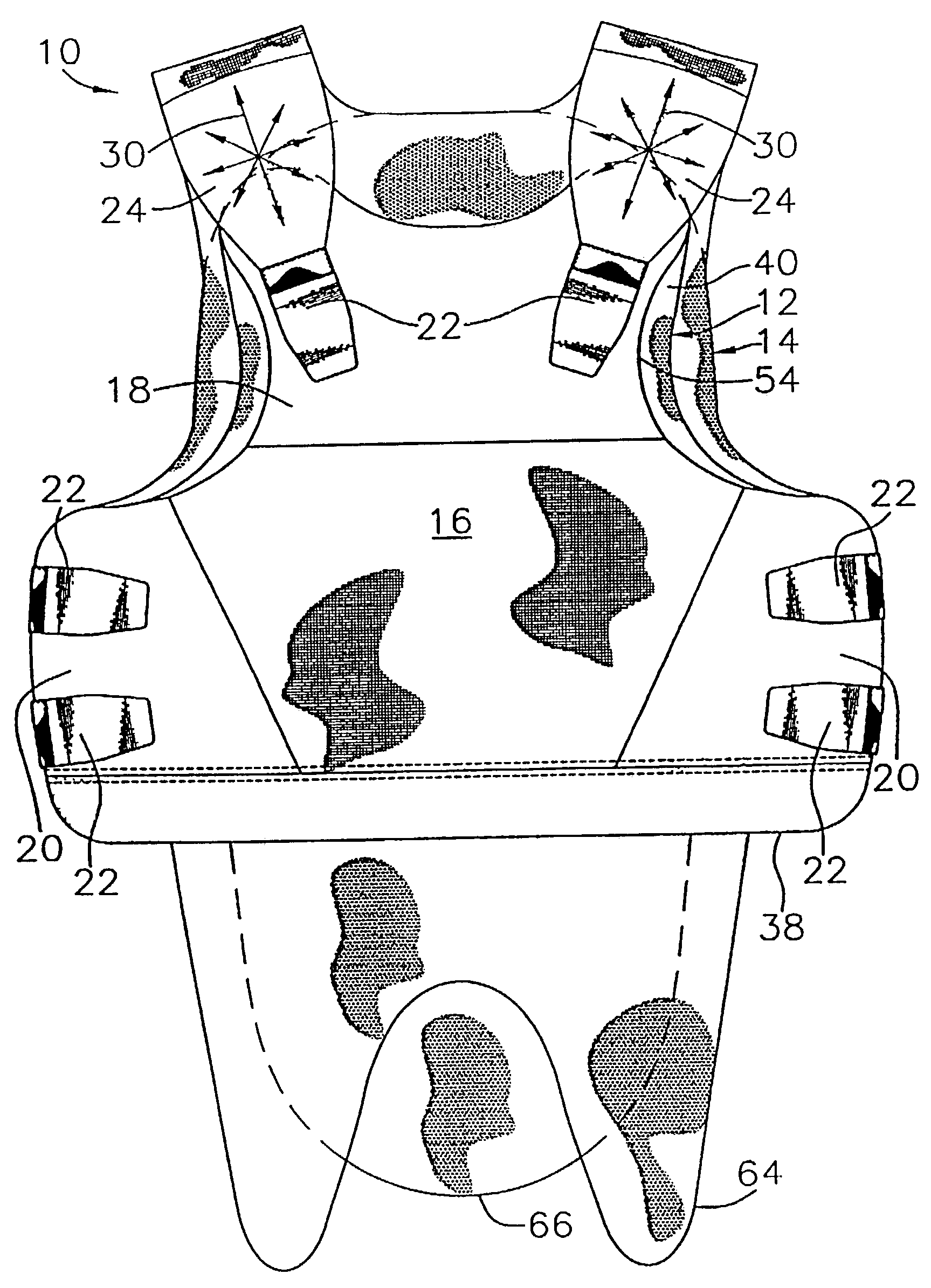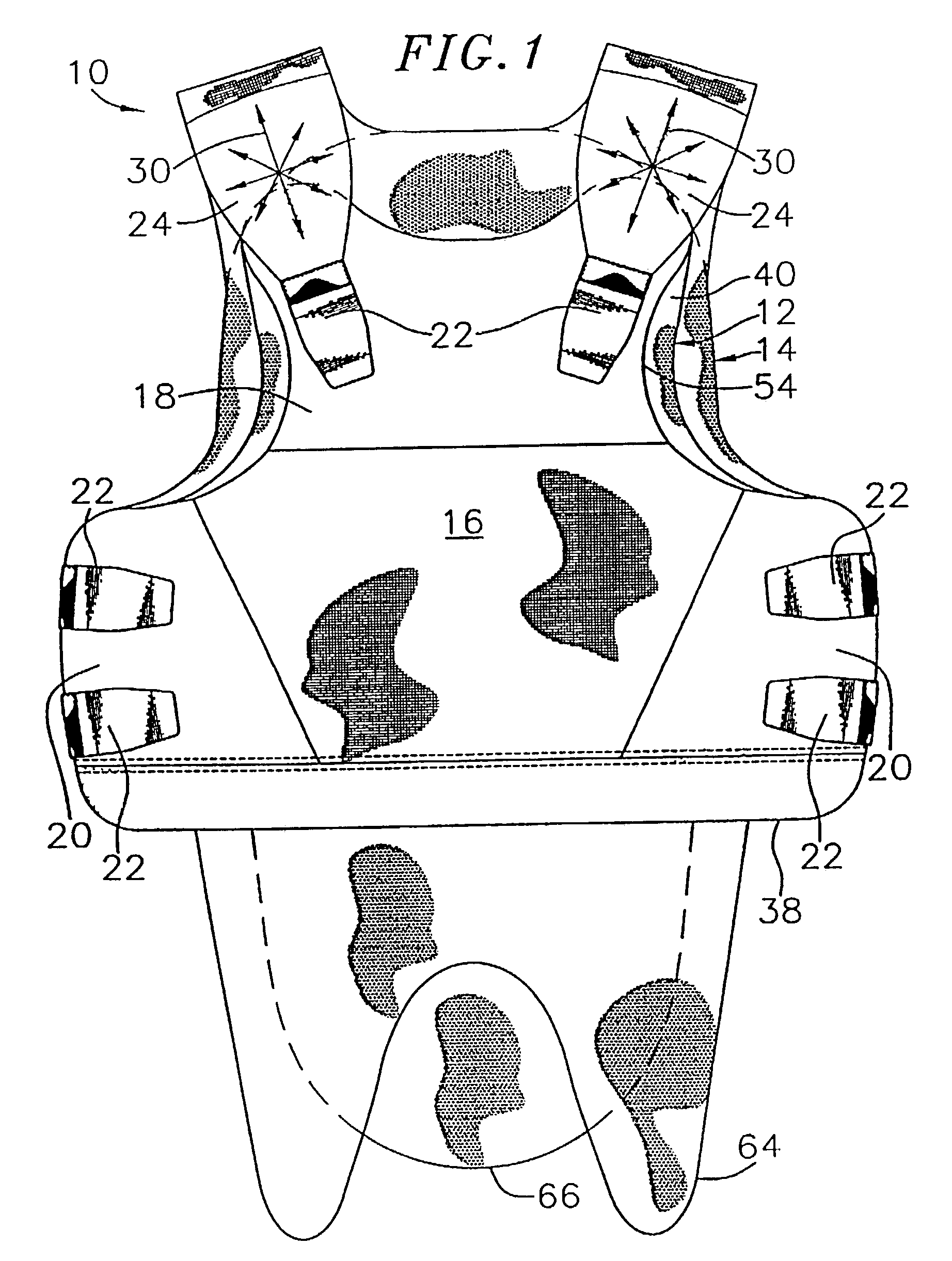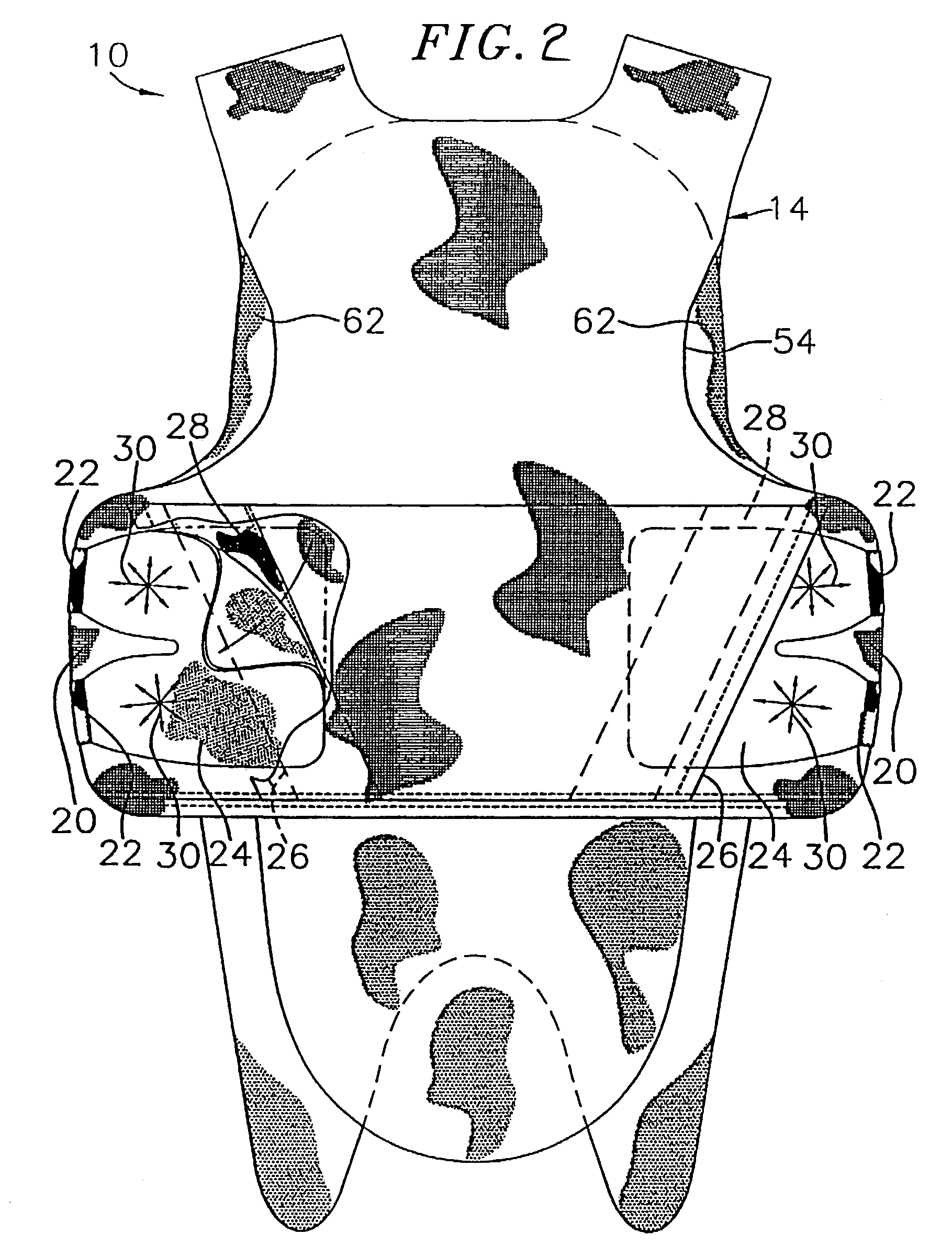Energy absorbing device for ballistic body armor
a technology of energy absorption and ballistic body armor, which is applied in the field of protective vests, can solve the problems of affecting the safety of wearers, and exposing wearers' areas to subsequent rounds, so as to improve the ballistic performance of the package, improve the safety and performance of the vest, and reduce the trauma of wearers
- Summary
- Abstract
- Description
- Claims
- Application Information
AI Technical Summary
Benefits of technology
Problems solved by technology
Method used
Image
Examples
Embodiment Construction
[0024]A ballistic vest 10 of the present invention is shown in FIGS. 1 and 2. The ballistic vest 10 is a concealable vest of the soft body armor type commonly worn by law enforcement officers. The ballistic vest includes a front panel 12 and a rear panel 14. The front panel 12 protects the chest and stomach of the wearer while the rear panel 14 protects the back of the wearer. Both the front and rear panels protect the sides of the wearer as will be discussed in more detail below.
[0025]The front panel 12 may include a trapezoidal center panel 16 and hook compatible fabric located along the top 18 and sides 20 of the front panel 12. Top 18 and sides 20 provide a large area for hook fasteners 22 to secure the front panel and rear panel together around the wearer. Top 18 and sides 20 allow for placement of fasteners 22 at any location to provide an optimal fit for the particular wearer. Neoprene composite straps 24 located at the top and sides of the ballistic vest are attached to the ...
PUM
 Login to View More
Login to View More Abstract
Description
Claims
Application Information
 Login to View More
Login to View More - R&D
- Intellectual Property
- Life Sciences
- Materials
- Tech Scout
- Unparalleled Data Quality
- Higher Quality Content
- 60% Fewer Hallucinations
Browse by: Latest US Patents, China's latest patents, Technical Efficacy Thesaurus, Application Domain, Technology Topic, Popular Technical Reports.
© 2025 PatSnap. All rights reserved.Legal|Privacy policy|Modern Slavery Act Transparency Statement|Sitemap|About US| Contact US: help@patsnap.com



